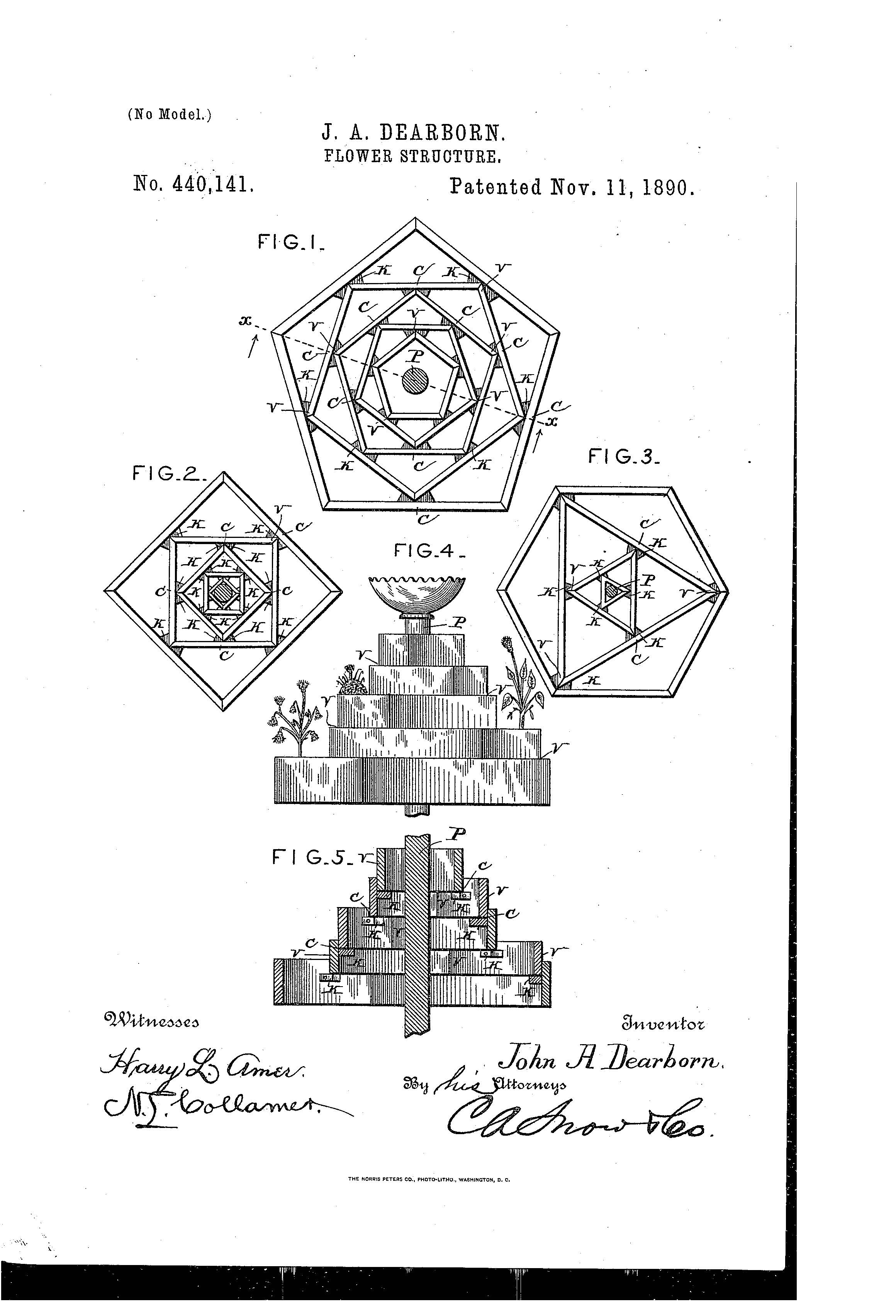On this day in 1890 the patent for Flower Structure was granted. U.S. Patent No. 440,141.
The Flower Structure was invented by John A. Dearborn, of Kansas City, Missouri. This patent application was granted on November 11, 1890 as U.S. Patent No. 440,141.
This invention is designed for and adapted to the culture and display of flowering plants, and is specifically styled “florum.”
The ultimate and highest end of the cultivation of flowers is to minister pleasure to the mind; to gratify the aesthetic element of the mind, its love of the beautiful through the medium of sight resting on flower-bloom in the midst of its foliage surroundings.
Not all forms of presentation or arrangement of flowers make an equally good display. The almost universal display of groups of flowers is in beds and on the plane of the surface of the earth. Such objects are always more or less beautiful and pleasing; but however large such beds, and however varied in kind and species and color markings the flower composing them may be, the one thing they need, in order to their greatest beauty and the most pleasing effect, is what in sculpture is known as “higher relief” – that is, distinctiveness of outline to groups as art units and, as far possible, to individual flowers in the groups.
His invention had a series of frames so that they were not just flat, they had levels and dimensions to almost give a pyramidal outline. The frames were also angled in some places as to allow for depth in the display. Once the frames are set, they are filled with soil and dirt and the flowers are added from there. Different species of flowers are planted in different spaces to allow for height etc.
Clearly from this detailed description above you can tell that Mr. Dearborn was an artist. He didn’t want to just settle for the average arrangement of flowers. He wanted his arrangements to be pieces of art and wanted to invent something that allowed others to create the same thing.